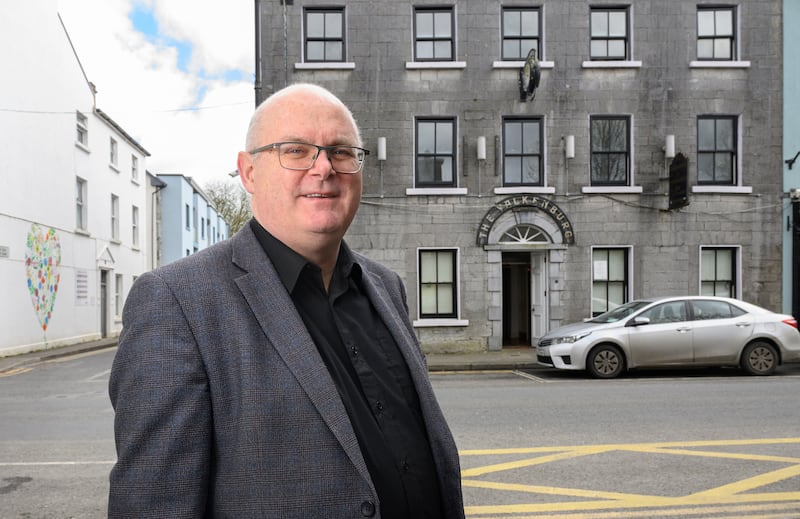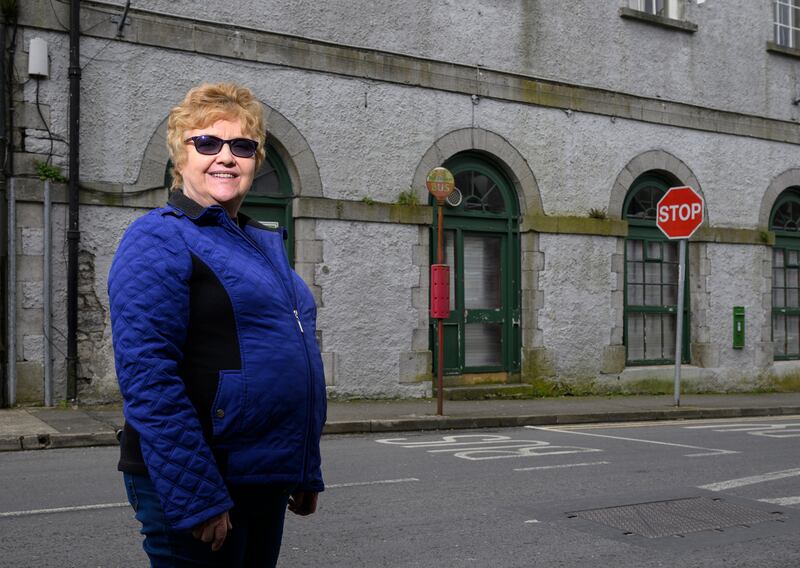When Ballinrobe native and former GAA correspondent turned businessman Liam Horan returned home in 1999 to work with Lake District Enterprise, his primary hope was to expand the employment base of the Co Mayo town and its scenic hinterland. Horan was very concerned at the time that there was a real danger Ballinrobe would become a dormitory town for people who worked in Castlebar and Galway city.
The stealthy closure of small shops and town-centre homes was already well established by then. The lure of city living both at home and abroad was a pattern that was all too clear on Gaelic football pitches and in empty hostelries in the south Mayo town.
Twenty-five years later the branding of the area – with its loughs Corrib, Mask and Carra – has been somewhat smothered by the success of the Wild Atlantic Way on Mayo’s coastline. Moreover, the town’s proximity to Ashford Castle, which is just 11km away, doesn’t appear – on the surface anyway – to have created an economic bounce.
As a result, the local community is fighting to bring its town back from the precipice. However, the sense of dilapidation and abandonment on some of its streetscapes belies a communal commitment to the rejuvenation of this historic market town.
This rejuvenation has been significantly bolstered by a series of national and local Government funding supports and studies, with the development of a multimillion-euro project for a town hall in the former Valkenburg Hotel underscoring a community campaign called “Believe in Ballinrobe” and its population of 3,148.
“These days Ballinrobe is buzzing with young families; many of them are commuting to Galway and Castlebar, Westport, Tuam, Sligo, as well as the midlands town of Athlone,” says Horan.

Amid the fallout from the pandemic, the practicalities of commuting were made more manageable by remote working, underlining the increasing importance of lifestyle choices.
“In many ways the development of the town hall, with performance and meeting facilities, as well as a coffee shop and, indeed, accommodation, is like a beacon for the rejuvenation of the town,” Horan says.
Local businessman and Fine Gael councillor Michael Burke is vice-chairman of the town hall project. He confirms €5.6 million has already been committed to the project through national and local Government grants, with continuing local fundraising adding almost another €500,000 to date.
Burke is all too aware that while this project will raise the morale and sense of identity of this community, the challenges of bringing the town back to life are more complex.
He confirms there has been great interest in the Croí Cónaithe vacant property grant scheme.
“Seventeen properties or sites have been identified as eligible for the scheme with interest for developments in about 10 of them already,” says Burke.
“Mayo County Council has also executed compulsory purchase orders recently for two derelict sites in the town: one on Glebe Street and another on the site of a disused garage on the edge of the town. The council plans to build 10 new housing units on these sites,” he confirmed.
The timing couldn’t be better as a quick check of properties for rent in Ballinrobe on daft.ie shows there is only one small house available.
Bringing back vibrancy to town centres all over the country is a long-term strategic goal for Tom Gilligan, a senior executive with Mayo County Council and the founder of VacantHomes.ie.
Gilligan confirms there have been 439 applications in the county for the Croí Cónaithe grants – launched in 2022 – with 254 already approved.
Interestingly, the Claremorris-Swinford Municipal District, where Ballinrobe is situated, has by far the biggest number of approved applications (103, of which 17 are in Ballinrobe) with smaller numbers for the more populous districts of Ballina (51), Castlebar (51) and Westport-Belmullet (49).
“The Croí Cónaithe Vacant Property Refurbishment Grant is certainly focusing people’s minds when it comes to vacant and derelict properties. More people are looking at the possibility of bringing a vacant and derelict property back into use and the grant is helping to kick-start that process. For towns like Ballinrobe, it is an opportunity to breathe new life into old buildings. Apart from the potential of providing someone with a new home, it increases the value of adjoining properties and also helps to protect our environment with less CO2 emissions,” says Gilligan.
He cites the overall benefits of such restoration projects and the fact that there are other funding streams available for certain properties.

“Restoring or bringing a vacant property back in to use helps to improve the look of a street and makes an area much more attractive to live and work in. For example, under another scheme, the Built Heritage Investment Scheme, a local businessman has restored Robe Villa. It was originally built in 1740 and is a seven-bay, two-storey house over a basement. The project has really improved the visual look of the street,” he says.
Further up the same street, which leads to the town centre from Castlebar, Gus Bowyer has been successful in his application under Croí Cónaithe to restore another 18th-century house.
The Croí Cónaithe grant provides up to €50,000 to renovate a vacant property, with an additional €20,000 top-up available if the property is derelict. Properties considered to be eligible must be vacant for two years or more and be built before 2008.
“I’m delighted to have been fully approved for the grant and plan to do some of the restoration work myself before moving in to it in about a year. The house was built in 1758 and has two storeys with four bedrooms,” says Bowyer.
He explains that as well as floors needing to be replaced, and some plastering and redecorating, he plans to reinstate the original sash windows.
The latest GeoDirectory Residential Buildings Report indicates Mayo is the county with the highest level of dereliction and is among the counties with the highest vacancy rate.
However, the report has also shown an increase in residential construction activity in the county last year, with a drop in the overall level of vacancy and dereliction. Some 495 new Mayo addresses were added to the directory’s database in the 12 months to December 2023, a 10 per cent increase from the 12 months to December 2022.
[ Ballinrobe protests: How plans to house 50 asylum seekers were changedOpens in new window ]
The directory records 84.8 per cent of houses being occupied, which is almost 10 per cent less than the national housing rate of occupancy. Some 4.5 per cent of the housing stock in Mayo are holiday homes and a further 10.7 per cent are vacant homes.
One key factor for the success of all the funding supports is highlighted by Mary Jackson, co-ordinator of Tacú Ballinrobe Family Resource Centre. “The successful delivery of all these projects to bring life back into our towns must be carried out from the ground up. There must be community consultation and we need to be listened to. It is pointless planting trees in the public realm if the people living in the town believe the upgrade of shopfronts is more of a priority, for example,” argues Jackson.
She adds: “The timing for Ballinrobe is good now.”

Denise Horan agrees. She moved back home in 2019 for family reasons, having lived in the Netherlands, Scotland and Kazakhstan.
“I thought I was moving home temporarily and then Covid changed everything. I work from home as a consultant in the renewable energy sector and commute to Dublin or through Knock airport when necessary,” she explains.
A former Mayo footballer, she is busy during her free time these days training underage Gaelic footballers.
“A lot of people have moved back and are raising families here now, so there is a new generation of leaders helping to keep the integrity of the traditional organisations vibrant. They are also injecting new ideas with the brilliant rejuvenation of the Ballinrobe Festival over the last couple of years,” she says.
The support of a plethora of local businesses, including Ballinrobe Racecourse, has been key to the success of all the continuing initiatives, she stresses.
With the community logo of “Believe in Ballinrobe”, it is no surprise that another medium-term project is to develop a museum and heritage centre in Market House, another listed 18th-century building. It was here that a court sitting was held in 1880 so that locals could be tried for threatening the infamous landlord, Capt Charles Boycott.
- Sign up for push alerts and have the best news, analysis and comment delivered directly to your phone
- Find The Irish Times on WhatsApp and stay up to date
- Our In The News podcast is now published daily – Find the latest episode here










